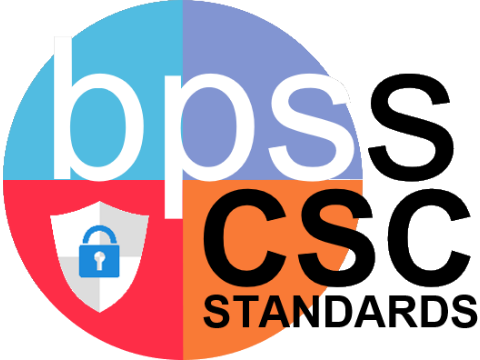BPS District Computer Science and Cybersecurity Standards Book
K-12 Grade Levels
Grade 06
CSC-06.TS TS Technology Systems
Sub-Concepts
(NI) Network & Internet - Networks link computers and devices locally and around the world allowing people to access and communicate information.
(HS) Hardware & Software - Devices, hardware, and software work together as a system to accomplish tasks..
(T) Troubleshooting - Strategies for solving technology system problems.
- CSC-06.TS_NI.1 Explain how data is sent across networks.
- CSC-06.TS_HS.1 Use hardware and/or software to complete a task.
- CSC-06.TS_HS.2 Use software features to accomplish a goal.
- CSC-06.TS_HS.3 Organize, store, and retrieve digital information with guidance.
- CSC-06.TS_HS.4 Identify threats to technology systems. (CYSEC)
- CSC-06.TS_HS.5 Identify security measures to protect technology systems. (CYSEC)
- CSC-06.TS_T.1 Apply basic troubleshooting strategies.
CSC-06.CT CT Computational Thinking
Sub-Concepts
(PSA) Problem Solving & Algorithms - Strategies for understanding and solving problems.
(DCA) Data Creation & Analysis - Data can be collected, used, and presented with computing devices or digital tools.
(DD) Development & Design - Design processes to create new, useful, and imaginative solutions to problems.
- CSC-06.CT_PSA.1 Identify and test an algorithm to solve a problem.
- CSC-06.CT_PSA.2 Debug a program that includes sequencing, loops, or conditionals.
- CSC-06.CT_PSA.3 Compare and contrast the efficiencies of multiple solutions to a task.
- CSC-06.CT_DCA.1 Collect and analyze data to support a claim.
- CSC-06.CT_DD.1 Use programs that utilize combinations of loops, conditionals, and the manipulation of variables representing different data types.
CSC-06.IL IL Information Literacy
Sub-Concepts
(A) Access - Effective search strategies can locate information for intellectual or creative pursuits.
(E) Evaluate - Information sources can be evaluated for accuracy, currency, appropriateness, and purpose.
(C) Create - It is important to both consume and produce information to be digitally literate.
(IP) Intellectual Property - Respect for the rights and obligations of using and sharing intellectual property.
- CSC-06.IL_A.1 Use a variety of strategies to refine and revise search results.
- CSC-06.IL_E.1 Evaluate information and its sources.
- CSC-06.IL_C.1 Repurpose or remix original works following fair use guidelines.
- CSC-06.IL_IP.1 With guidance, properly use copyrighted works, works in the creative commons, and works in the public domain.
- CSC-06.IL_IP.2 Cite a variety of sources using the appropriate format.
- CSC-06.IL_IP.3 Describe negative consequences of piracy and plagiarism.
CSC-06.CS CS Computers in Society
Sub-Concepts
(IC) Impacts of Computing - Past, present, and possible future impact of technology on society.
(SI) Social Interactions - Technology facilitates collaboration with others.
- CSC-06.CS_IC.1 Identify the positive and negative impacts of past, present, and future technology, including bias and accessibility
- CSC-06.CS_SI.1 Use collaborative technology.
- CSC-06.CS_SI.2 Identify how social interactions can impact a person’s self-image.
CSC-06.DC DC Digital Citizenship
Sub-Concepts
(SE) Safety & Ethics - There are both positive and negative impacts in social and ethical behaviors for using technology.
(RU) Responsible Use - Respect and dignity in virtual communities.
(DI) Digital Identity - Responsibilities and opportunities of living, learning and working in an interconnected digital world.
- CSC-06.DC_SE.1 Identify steps for responding to uncomfortable situations when interacting online. (CYSEC)
- CSC-06.DC_SE.2 Identify basic methods to maintain digital privacy and security. (CYSEC)
- CSC-06.DC_SE.3 Recognize that data-collection technology can be used to track navigation online. (CYSEC)
- CSC-06.DC_SE.4 Identify threats to personal cybersecurity. (CYSEC)
- CSC-06.DC_RU.1 Identify different forms of cyberbullying.
- CSC-06.DC_RU.2 Identify strategies to stop cyberbullying.
- CSC-06.DC_RU.3 Use appropriate digital etiquette in a variety of situations.
- CSC-06.DC_RU.4 Understand the purpose of and comply with Acceptable Use Policies.
- CSC-06.DC_DI.1 Describe personal online usage and determine how it affects identity on- and offline.





